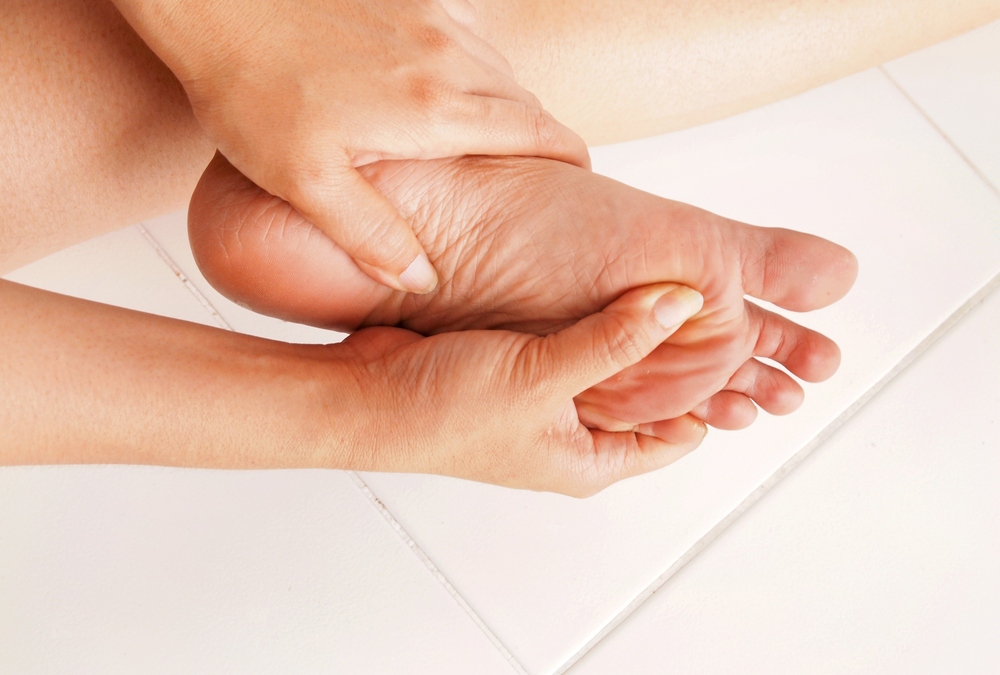Tinea pedis, also known as athlete’s foot, is a fungal infection that primarily affects the feet. It causes symptoms such as itching, redness, cracking, and peeling of the skin, often accompanied by discomfort and pain. Although not life-threatening, the condition can significantly impact daily activities and quality of life of Kelowna, BC, and Victoria, BC residents. Timely treatment is crucial to alleviate symptoms and minimize the risk of complications.
Say Goodbye to Athlete’s Foot: 8 Effective Treatment Options for Kelowna, BC, and Victoria, BC Residents
1. Over-the-Counter Antifungal Creams
Over-the-counter antifungal creams are readily available medications designed to treat tinea pedis. These creams contain active ingredients such as clotrimazole, terbinafine, or miconazole, which have antifungal properties. They are typically sold in pharmacies, drugstores, or supermarkets, and can be purchased without a prescription. To use OTC antifungal creams effectively, it is essential to carefully follow the instructions provided on the packaging.
Firstly, clean and dry the affected area before applying a thin layer of the cream. Gently massage the cream into the skin. It is important to apply the cream to the surrounding healthy skin as well, as this can prevent the spread of the infection. Continue the treatment as directed, usually for a specified duration, even if symptoms improve. OTC antifungal creams can effectively relieve symptoms such as itching, redness, and scaling.
2. Prescription-Strength Topical Antifungals
Prescription-strength antifungals are recommended when OTC treatments fail to eliminate the infection or in cases of severe or persistent tinea pedis. They contain higher concentrations of active ingredients like econazole, ketoconazole, or ciclopirox. These stronger formulations are often more effective against stubborn or resistant fungal infections. Prescription-strength antifungals work by targeting the underlying fungal organisms, disrupting their growth.
They may come in the form of creams, ointments, or gels, and are applied directly to the affected area. Foot doctors prescribe prescription-strength topical antifungals if the infection shows no signs of improvement with OTC treatments, if there are concurrent complications or risk factors, or if the infection has spread to other areas of the body. It is important to follow the prescribed treatment regimen and attend any follow-up appointments.
3. Antifungal Powders or Sprays
Powders or sprays are alternative treatments for tinea pedis. They are particularly useful in cases where creams or ointments may be difficult to apply or when there is excessive moisture or sweating on the feet. These remedies often contain active ingredients such as miconazole or tolnaftate, which possess antifungal properties.
The benefits of antifungal powders or sprays include their ability to keep the feet dry and create an unfavourable environment for fungal growth. They absorb moisture, reduce friction, and inhibit the proliferation of fungi. Additionally, they can help relieve symptoms such as itching and scaling. To use antifungal powders or sprays effectively, clean and dry the affected area. Sprinkle the powder or apply the spray evenly on the feet.
4. Oral Antifungal Medications
Oral antifungal medications may be prescribed for tinea pedis in cases where topical treatments prove ineffective, or the infection is severe or widespread. These drugs offer the benefit of treating the infection systemically, meaning they are absorbed into the bloodstream and distributed throughout the body to target fungal organisms.
They can be particularly beneficial when the infection is difficult to reach with topical treatments or if there is a risk of spreading to other areas of the body. Oral antifungal medications are typically taken daily for a specified period, often a few weeks or a few months. The duration of treatment depends on the severity and extent of the infection, as determined by your Kelowna, BC foot doctor. It’s important to complete the full course of medication as prescribed.
5. Soaking the Feet
Soaking the feet in warm water can be an effective adjunctive treatment for athlete’s foot as it helps alleviate symptoms and inhibit the growth of fungi. The warm water helps soothe the skin, reduce inflammation, and enhance the penetration of antifungal agents into the affected area. To perform a foot soak, fill a basin or tub with warm water at a comfortable temperature.
Add a few tablespoons of diluted vinegar or Epsom salt to the water for additional antifungal benefits. Soak the feet for approximately 15 to 20 minutes, ensuring that the affected areas are fully submerged. Regular foot soaks can be done once or twice a day, depending on the severity of the infection and individual preference. After soaking, gently pat the feet dry using a clean towel, making sure to thoroughly dry between the toes.
6. Keeping the Feet Dry
Maintaining dry conditions for the feet is crucial for patients suffering from tinea pedis as it creates an unfavourable environment for fungal growth. Excess moisture on the feet can exacerbate the infection and prolong healing. To keep the feet dry, start by regularly changing socks, especially if they become damp or sweaty. Opt for moisture-wicking socks made of breathable materials such as cotton or moisture-absorbing synthetic fibres.
Avoid wearing tight or non-breathable footwear, such as plastic or rubber shoes, which can trap moisture and promote fungal growth. Instead, choose shoes made of breathable materials like leather or canvas. Using absorbent foot powders or sprays as directed by your Victoria, BC foot doctor can also help absorb excess moisture and reduce friction. Apply these products to the feet and between the toes before putting on socks and shoes.
7. Practising Good Foot Hygiene
Maintaining good foot hygiene is an important step for preventing tinea pedis and speeding up the healing process. Wash your feet daily with mild soap and warm water, paying particular attention to the spaces between the toes and thoroughly scrubbing the soles to remove dirt, sweat, and dead skin cells. After washing, it is important to ensure the feet are completely dry, especially between the toes, as moisture can promote fungal growth.
Using a clean towel and even a hairdryer on a cool setting can aid in drying. Proper nail care involves trimming toenails straight across and keeping them at a moderate length to prevent ingrown nails. Use flip-flops or sandals in communal showers, pools, and locker rooms to minimize your risk. Additionally, let your shoes fully dry between wearings to prevent moisture buildup and fungal growth.
8. Avoiding Reinfection
Regular visits to a foot doctor, also known as a podiatrist, can be beneficial for managing tinea pedis and preventing reinfection. It is recommended to consult with a doctor if your symptoms persist or worsen despite self-care measures, there are underlying health conditions like diabetes that may complicate foot infections, or the infection spreads to other areas of the body and persists for an extended period.
A foot doctor can provide personalized advice, treatment, and monitoring. They may recommend specific shoes or modifications to footwear to ensure proper fit and ventilation, reducing moisture retention. Disinfecting shoes is another important measure. To do this, consider using antifungal sprays or powders specifically designed for shoes. These products can be applied inside shoes to eliminate any remaining fungi.
Several treatments offer relief and combat athlete’s foot effectively. Over-the-counter antifungal creams, prescription-strength medications, and topical powders or sprays are among the recommended approaches. To ensure proper diagnosis and personalized treatment, seek professional guidance from foot doctors. Call or message Island Foot Clinics in Kelowna, BC, and Victoria, BC today and put an end to your foot problems.

